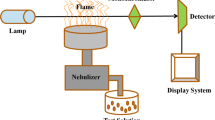
Overview
Access this book
Tax calculation will be finalised at checkout
Other ways to access
About this book
Similar content being viewed by others
Keywords
Table of contents (25 chapters)
-
Front Matter
Editors and Affiliations
Bibliographic Information
Book Title: Environmental Monitoring and Biodiagnostics of Hazardous Contaminants
Editors: Michael Healy, Donald L. Wise, Murray Moo-Young
DOI: https://doi.org/10.1007/978-94-017-1445-7
Publisher: Springer Dordrecht
-
eBook Packages: Springer Book Archive
Copyright Information: Springer Science+Business Media B.V. 2001
Hardcover ISBN: 978-0-7923-6869-4Published: 28 February 2001
Softcover ISBN: 978-90-481-5674-0Published: 01 December 2010
eBook ISBN: 978-94-017-1445-7Published: 14 March 2013
Edition Number: 1
Number of Pages: XIV, 338
Topics: Environmental Science and Engineering, Biotechnology, Applied Ecology, Environment, general, Engineering, general, Life Sciences, general



